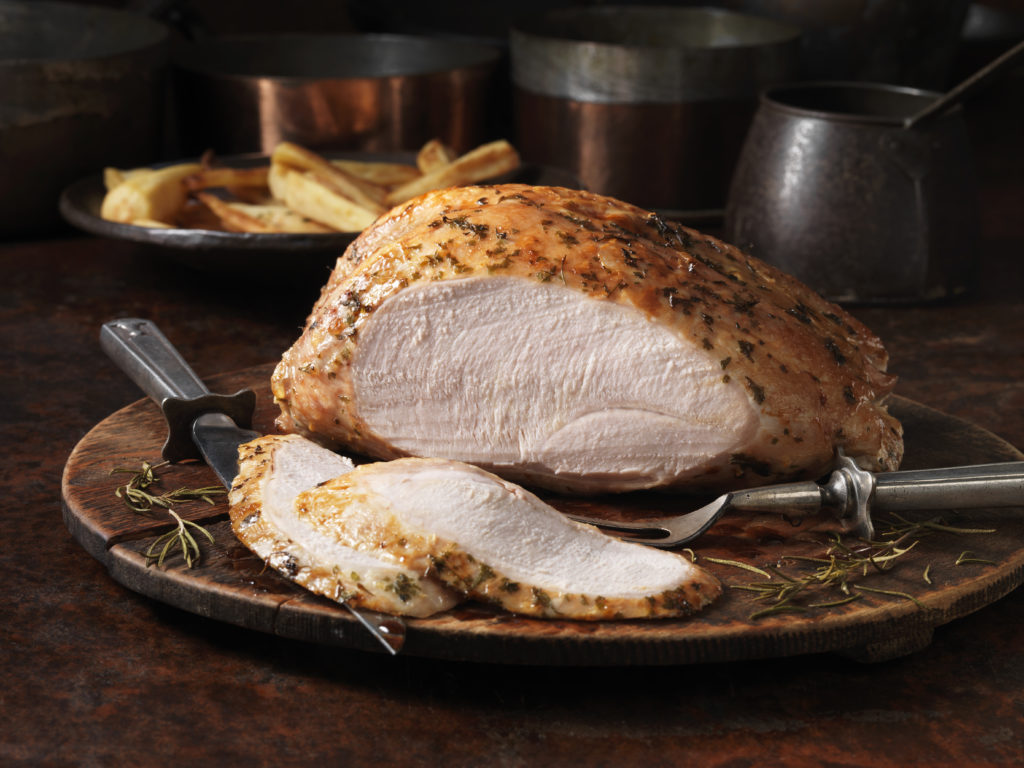According to the American Farm Bureau Federation (AFBF), turkey prices have reached their highest point since 2015 at $6.70 per pound. This year’s highly pathogenic avian influenza (HPAI) outbreak has played a major role in driving up turkey prices ahead of Thanksgiving, similar to the domestic H5 outbreak that occurred in 2014 to 2015.
“Turkey prices are currently at record levels, resulting from the combination of tighter supplies caused by HPAI, higher demand, inflation and increased demands on US food systems,” the AFBF said in a statement. “Fresh boneless, skinless tom turkey breasts reached a record high of $6.70 per pound on September 17th, 112 percent higher than the same time in 2021 when prices were $3.16 per pound.”
Since February, a viscous and enduring strain of the HPAI virus has devastated nearly 250 commercial flocks and close to 300 backyard flocks, resulting in the destruction of tens of millions of birds, according to the Animal and Plant Health Inspection Service (APHIS) of the US Department of Agriculture (USDA).
Related: Why is the US Experiencing a Topo Chico Shortage?
It’s not just turkey prices that have been affected by the HPAI outbreak. While egg prices have come down from record highs in July, the average price for a dozen grade A eggs is $2.34, 27 percent higher than the same time in 2021 and 44 percent above the five-year average of $1.29.
“Wild birds can be infected with HPAI and show no signs of illness,” the APHIS explained. “They can carry the disease to new areas when migrating, potentially exposing domestic poultry to the virus.”
In Minnesota, the top turkey supplier in the US, the situation has gotten so dire with the deadly outbreak that Governor Tim Walz signed an executive order to waive trucking regulations to help fight the spread. Other top turkey producing states, including North Carolina, Arkansas, Indiana, Missouri, Virginia, Iowa and California, have also been dealing with the effects of the virus.
In total, the HPAI virus has killed 44 million birds this year, including 4.5 million turkeys, or 2.5 percent of US turkey production. Thanksgiving is projected to cost more this year due to the flu-diminished turkey supply coupled with the highest inflation in 40 years, which has hit the meat industry at double the rate of other consumer products due to higher feed prices and more expensive fuel.
Despite higher turkey prices, farmers and retailers believe there should be enough turkeys to meet the holiday demand. “All of us are feeling the pain of higher prices at the grocery store,” AFBF President Zippy Duvall said in the same statement. “HPAI outbreaks in the spring and an uptick in cases in the fall are taking a toll, but farmers remain dedicated to ensuring America’s food supply remains strong.”
While consumers should have little trouble finding frozen turkeys in time for Thanksgiving dinner, finding fresh turkeys may require some advanced planning. Consumers looking to purchase a non-frozen turkey are advised to shop early, plan ahead, check with retailers and get on a waiting list.












Join or login to leave a comment
JOIN LOGIN